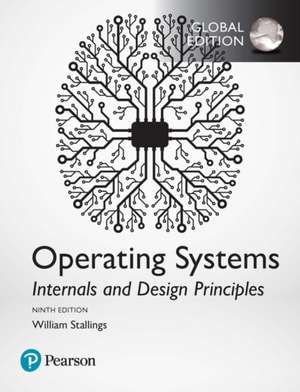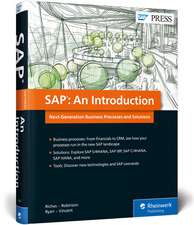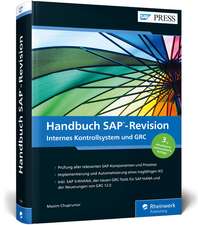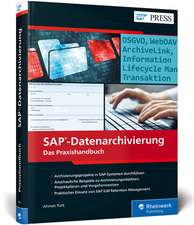Operating Systems: Internals and Design Principles, Global Edition
Autor William Stallingsen Limba Engleză Paperback – 28 apr 2018
Preț: 534.61 lei
Preț vechi: 668.26 lei
-20% Nou
102.31€ • 106.42$ • 84.46£
Carte disponibilă
Livrare economică 21-27 martie
Livrare express 08-14 martie pentru 60.17 lei
Specificații
ISBN-10: 1292214295
Pagini: 800
Dimensiuni: 233 x 176 x 48 mm
Greutate: 1.24 kg
Ediția:9
Editura: Pearson
Colecția Pearson Higher Education
Cuprins
Online Chapters and Appendices
VideoNotes
Preface
About the Author
I. Background
1. Computer System Overview
1.1. Basic Elements
1.2. Evolution of the Microprocessor
1.3. Instruction Execution
1.4. Interrupts
1.5. The Memory Hierarchy
1.6. Cache Memory
1.7. Direct Memory Access
1.8. Multiprocessor and Multicore Organization
1.9. Key Terms, Review Questions, and Problems
1A. Performance Characteristics of Two-Level Memories
2. Operating System Overview
2.1. Operating System Objectives and Functions
2.2. The Evolution of Operating Systems
2.3. Major Achievements
2.4. Developments Leading to Modern Operating Systems
2.5. Fault Tolerance
2.6. Os Design Considerations for Multiprocessor and Multicore
2.7. Microsoft Windows Overview
2.8. Traditional Unix Systems
2.9. Modern Unix Systems
2.10. Linux
2.11. Android
2.12. Key Terms, Review Questions, and Problems
II. Processes
3. Process Description and Control
3.1. What is a Process?
3.2. Process States
3.3. Process Description
3.4. Process Control
3.5. Execution of the Operating System
3.6. Unix Svr4 Process Management
3.7. Summary
3.8. Key Terms, Review Questions, and Problems
4. Threads
4.1. Processes and Threads
4.2. Types of Threads
4.3. Multicore and Multithreading
4.4. Windows Process and Thread Management
4.5. Solaris Thread and Smp Management
4.6. Linux Process and Thread Management
4.7. Android Process and Thread Management
4.8. Mac OS X Grand Central Dispatch
4.9. Summary
4.10. Key Terms, Review Questions, and Problems
5. Concurrency: Mutual Exclusion and Synchronization
5.1. Mutual Exclusion: Software Approaches
5.2. Principles of Concurrency
5.3. Mutual Exclusion: Hardware Support
5.4. Semaphores
5.5. Monitors
5.6. Message Passing
5.7. Readers/Writers Problem
5.8. Summary
5.9. Key Terms, Review Questions, and Problems
6. Concurrency: Deadlock and Starvation
6.1. Principles of Deadlock
6.2. Deadlock Prevention
6.3. Deadlock Avoidance
6.4. Deadlock Detection
6.5. An Integrated Deadlock Strategy
6.6. Dining Philosophers Problem
6.7. Unix Concurrency Mechanisms
6.8. Linux Kernel Concurrency Mechanisms
6.9. Solaris Thread Synchronization Primitives
6.10. Windows Concurrency Mechanisms
6.11. Android Interprocess Communication
6.12. Summary
6.13. Key Terms, Review Questions, and Problems
III. Memory
7. Memory Management
7.1. Memory Management Requirements
7.2. Memory Partitioning
7.3. Paging
7.4. Segmentation
7.5. Summary
7.6. Key Terms, Review Questions, and Problems
7A. Loading and Linking
8. Virtual Memory
8.1. Hardware and Control Structures
8.2. Operating System Software
8.3. Unix and Solaris Memory Management
8.4. Linux Memory Management
8.5. Windows Memory Management
8.6. Android Memory Management
8.7. Summary
8.8. Key Terms, Review Questions, and Problems
IV. Scheduling
9. Uniprocessor Scheduling
9.1. Types of Processor Scheduling
9.2. Scheduling Algorithms
9.3. Traditional Unix Scheduling
9.4. Summary
9.5. Key Terms, Review Questions, and Problems





















